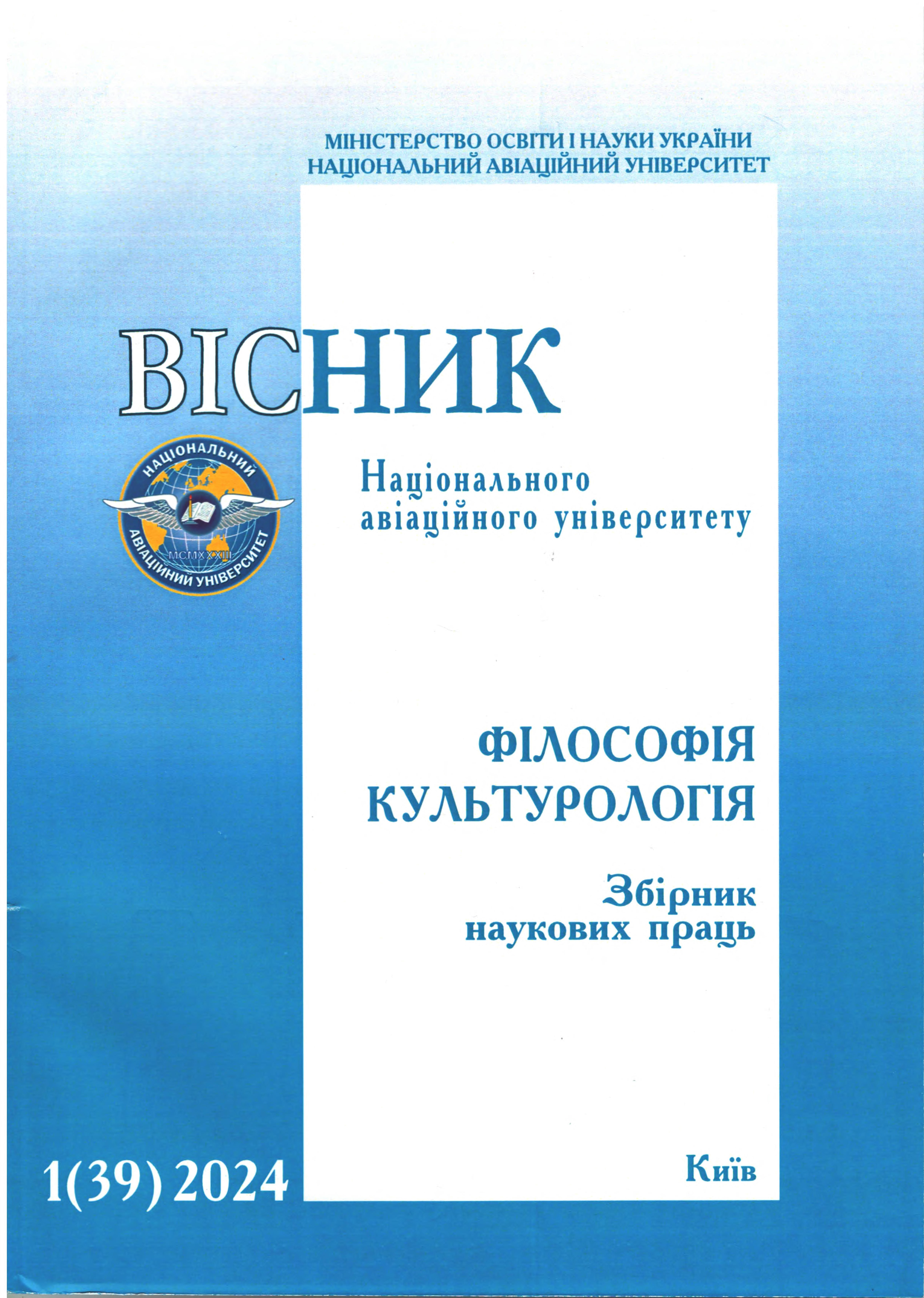COMMUNICATION AS A DEVICE FOR STUDYING SOCIAL REALITY AND CULTURAL MEANINGS: SPECIFICATION OF COMMUNICATIVE DIMENSIONS
DOI:
https://doi.org/10.18372/2412-2157.39.18465Keywords:
communication; social communication; social ecology; communicative ecology; culture; symbolic culture; social structure; holism; social analysisAbstract
Introduction. Studying communications in humanitarian and social sciences has become an effective device for analyzing social, political, technical, and cultural practices. It provides a conceptual framework for implementing social description and diagnostics of the life of groups, communities, and institutions with the aim of their transformation. Research methods. Holistic, systemic, interdisciplinary, and constructivist methodological approaches are used for the analysis of social media environments (ecologies) and collective interactions. Additionally, a communication structure of analysis associated with the theory of social construction of reality and phenomenological vision is employed. The aim is based on identifying the main environments for the reproduction of social practice and human interaction, to determine the epistemological and ontological significance of interdisciplinary communicative approaches to their study. Among the tasks is considering a network of conceptual definitions and names associated with a holistic view of natural, physical, social, and cultural-symbolic environments (ecologies). Research results. Communication is defined as a process of social construction in which the social and the individual are in an organic relationship. The social reality from this perspective is viewed as a socio-communication system or "social ecology". The main dimensions or categories of social analysis are embodied in such names as physical, social, technological, emotional, cultural, symbolic, and communication ecologies. Discussion. The modern concept of ecology provides a generalized understanding of the interactions between man and nature, society and nature, the biosphere and the technosphere. It also explores the relationships between nature, culture, and civilization as a whole. Consequently, its subject goes beyond biological science. The concept of ecology is also used today in the context of communication studies and is recognized as quite fruitful. The ecological metaphor provides possibilities for exploring population change and life cycles, spatiotemporal dynamics, networks and clusters, and power relations. Conclusion. Social communication is seen as the symbolic and semantic action. Through this action, societies culturally construct their social ecologies, which today are increasingly mediated by the media and ICTs. The conceptualization of key social analysis categories should not so much ensure effective communication and social change, but more efficient high-quality social interaction - the humane dialogue and understanding.
References
Mcfarlane Dю А. Social Communication in a Technology-Driven Society: A Philosophical Exploration of Factor-Impacts and Consequences. American Communication Journal 2010 12 (Winter).
Vizer E.A. Social dimensions of communication; communicational dimensions of social processes. Some propositions on research lines and problematic. Revista Famecos - Midia, Cultura e Tecnologia. 2009. Dec. No. 40: 15+.
Vizer E.A., Carvalho H. Socioanalysis: A Communicational Research Device for Social Intervention. Historical Social Research / Historische Sozialforschung. 2013. Vol. 38, No. 2 (144). P. 218–235. URL: http://www.jstor.org/stable/24145483.
Lasswell H. D. The structure and function of communication in society. İletişim kuram ve araştırma dergisi. 2007. Sayı 24 Kış-Bahar, S. 215-228.
URL:https://sipa.jlu.edu.cn/__local/E/39/71/4CE63D3C04A10B5795F0108EBE6_A7BC17AA_34AAE.pdf
Davison K. K., Lawson C. T. Do attributes in the physical environment influence children's physical activity? A review of the literature. Int J Behav Nutr Phys Act. 2006. Vol.3, No 19. URL: https://doi.org/10.1186/1479-5868-3-19
Van Holle V., Deforche B., Van Cauwenberg J. et al. Relationship between the physical environment and different domains of physical activity in European adults: a systematic review. BMC Public Health. 2012. Vol. 12, No 807. https://doi.org/10.1186/1471-2458-12-807
Bahns A., Pickett K., Crandall C. Social ecology of similarity: Big schools, small schools and social relationships. Group Processes & Intergroup Relations - GROUP PROCESS INTERGROUP RELA. 2012. No 15. P. 119-131. https://doi.org/10.1177/1368430211410751.
Hinner M. B. Social Ecological Perspective on Intercultural Communication. In The International Encyclopedia of Intercultural Communication. 2017. Y.Y. Kim (Ed.). https://doi.org/10.1002/9781118783665.ieicc0067
What is emotional ecology? Green-Ecolog.com 2024: [site] https://green-ecolog.com/15338361-what-is-emotional-ecology (date of access: 20.02.2024).
Bustos J. C. M. "On Cultural Ecology." Infoamérica: Iberoamerican Communication Review, Nº. 1, 2009. P.. 49-58
Wright G. A. Symbols, Ecology, and Cultural Variation. Anthropos. 1986. Vol. 81, No 4/6, P. 415–433. ttp://www.jstor.org/ stable/40461224
Nsamenang A. Bame. Ecocultural Theories of Development. In International Encyclopedia of the Social & Behavioral Sciences. 2015. Second Edition. P. 838-844. https://www.sciencedirect.com/topics/social-sciences/cultural-ecology (date of access: 20.02.2024).
Шоріна Т. Г. Поняття сучасної екології в фокусі соціально-філософського та наукового знання. Вісник Національного авіаційного університету. 2021. № 2 (34). С.76-81. (Серія: Філософія. Культурологія). https://doi.org/10.18372/2412-2157.34.16320
Hearn G., Foth, M. Communicative ecologies: Editorial preface. Electronic Journal of Communication, 2007. No. 17(1-2). Pp. 2-6. https://eprints.qut.edu.au/8171/
Altheide D. An Ecology of Communication: Cultural Formats of Control (eBook). Published 11 March 2020. New York. Imprint Routledge. 244 p. DOI https://doi.org/10.4324/ 9780429334122


